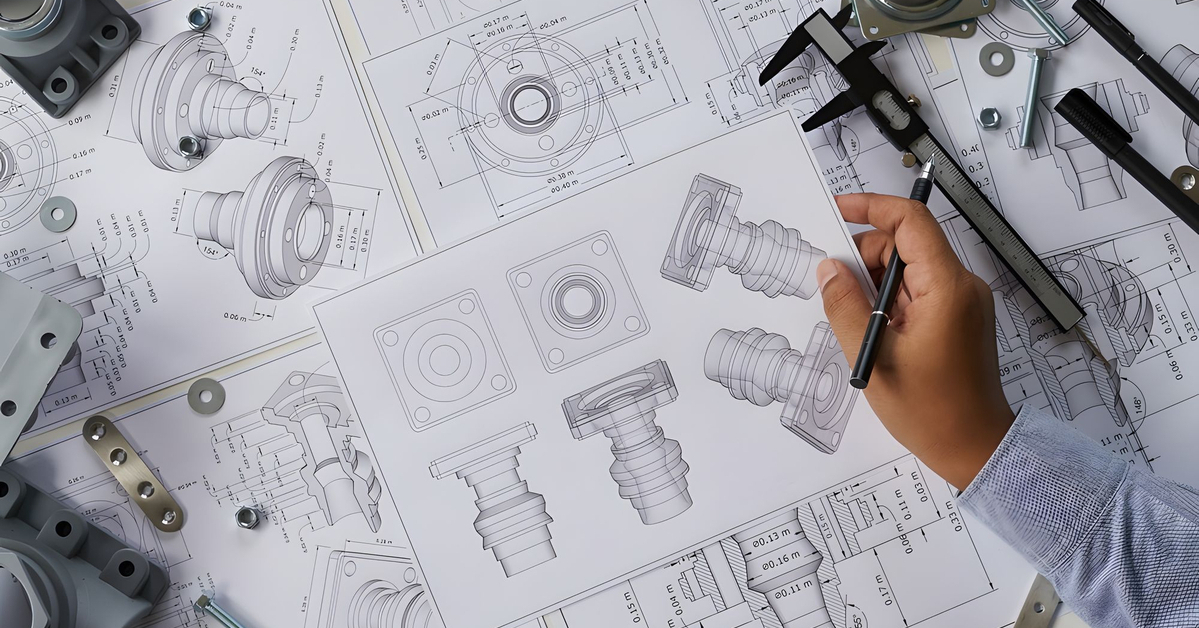
- +8615586668226
- [email protected]
- No. 30, Hongbang Industrial Park, Shenzhen

The engineering design process is a systematic approach used to develop solutions that meet specific needs or address defined problems. It involves a series of steps of the engineering design that guide the project from concept to completion, focusing on creativity, evaluation, and iteration.
Why It’s Important:
The first step of the engineering design process is identifying the problem. This stage sets the foundation for successful solutions by clearly defining the design requirements and constraints.
Key Activities:
A well-defined design problem is half the solution, ensuring the rest of the process is focused and relevant.
Once the problem is clear, the next phase in the engineering design cycle involves brainstorming and developing possible solutions. This stage encourages creativity and diverse thinking.
Methods Employed:
Design engineers often employ pool of potential design concepts to explore different creative directions, ensuring that no stone is left unturned in the pursuit of innovation.
Prototyping is a critical phase in the engineering design where ideas are translated into tangible prototypes. This step involves creating models or samples to test viability and functionality.
Benefits of Prototyping:
Utilizing tools like rapid prototyping, this stage bridges the gap between theory and practice, driving progress in engineering projects.
Moving forward, the focus shifts to design and design for manufacturing (DFM), optimizing the product’s design from a production perspective.
DFM Strategies:
Design and build processes benefit from integrating DFM principles early to ensure efficient and cost-effective manufacturing outcomes.
Design testing and evaluation are essential to the engineering design process. This step involves validating whether the design meets established requirements and functions as intended.
Steps in Testing:
This phase verifies whether the design can perform its intended function, ensuring reliability before transitioning to full-scale production.
The engineering design process is iterative, meaning it involves repeated cycles of improvement. Iterative design leads to refined products that better meet user needs.
Iteration Highlights:
Engaging in iteration ensures that the final design is optimized in both function and form, achieving excellence in product design.
The final stage involves refining the design for production, ensuring it is ready for manufacturing at scale.
Key Considerations:
Working alongside machining services can enhance the transition from prototype to production, supporting innovative solutions in manufacturing plants.
Design projects often face constraints that can hinder progress. These may include budget limitations, technological challenges, and regulatory compliance.
How to Overcome Constraints:
By addressing these challenges proactively, engineering teams can manage constraints effectively, ensuring successful project outcomes.
How is an engineering design process initiated?
Why is iteration important in design?
What role do prototypes play in design?
How does design for manufacturing impact product development?
To further explore design strategies and discover how our CNC solutions can support your engineering projects, please contact us or visit our resources on design and design for manufacturing. Embrace the journey of innovation with confidence and creativity.
Get the latest trends and facts about CNC fabrication from our blog.
Shenzhen Runkey Precision Technology Co. Ltd, a subsidiary of the Tensun Group, is your trusted one-stop solution for custom manufacturing from prototyping to production.Transforming your idea into reality with digital manufacturing resources,streamlined processes, expert guidance,accelerated timelines, and uncompromising quality.
©2024. CNC Fabrication All Rights Reserved.